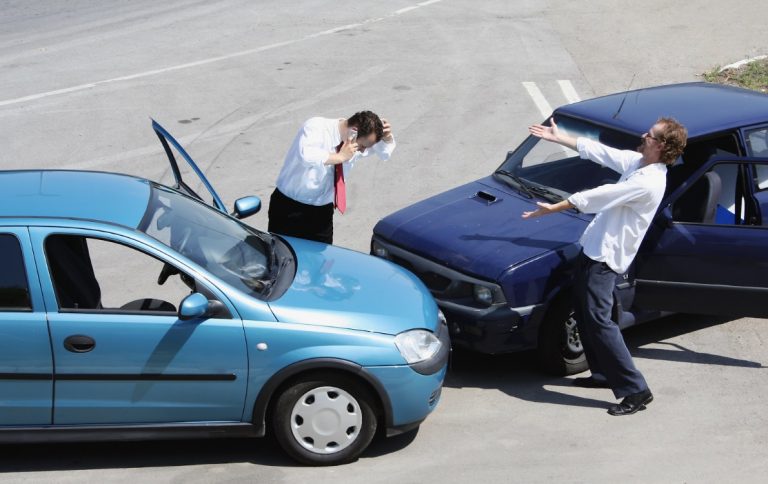You can probably agree with us that all types of car accidents can be a traumatic experience that can cause physical, emotional, and financial distress to those involved. When a car accident occurs, determining who is at fault can be a crucial factor in determining liability and compensation in a car accident claim.
In this blog post, we will discuss how car accident fault is determined.
Police Report
One of the first things that law enforcement officers do when they arrive at the scene of an accident is prepare a police report. This report will detail the circumstances surrounding the accident and any observations made by the officers. The police report will typically include a description of the accident, including the date, time, and location.
It will also include information about the drivers and any passengers involved in the accident. The officer will gather contact information for everyone involved, including insurance information.
The officer will also make observations about the accident scene, such as the weather conditions, road conditions, and the position of the vehicles. Officers will take measurements and photos of the scene, and may make note of any skid marks or other physical evidence that could help determine fault.
Officers will also take the time to interview the drivers and any witnesses to the accident. The statements made by the drivers and witnesses will be recorded in the police report. The officer may also issue traffic citations if they believe that one or more of the drivers violated traffic laws.
The police report can be an important piece of evidence in determining fault.
Eyewitnesses
Eyewitnesses to the accident can provide valuable information about what happened. An eyewitness is someone who saw the accident occur or arrived shortly after the accident and observed the aftermath. Eyewitnesses can provide valuable information about what happened in the accident and can help to corroborate or refute the accounts of the drivers involved.
When an eyewitness is present at the scene of a car accident, it is important to gather their contact information and a statement. The statement should include the location of the accident, the position of the vehicles involved, the actions of the drivers, and other relevant information.
Eyewitness statements can be recorded by the police officer who responds to the accident, or they can be obtained by the drivers involved or their attorneys. Their testimony can be important in cases where there is no clear physical evidence of fault, such as when the vehicles involved in the accident do not have visible damage.
Eyewitnesses can also provide information about factors that may have contributed to the accident, such as weather or road conditions.
One negative thing is that eyewitness testimony is not always reliable. Eyewitnesses may have different perspectives and interpretations of what happened, and they may be affected by their own biases or emotions. In addition, eyewitnesses may not have seen the entire accident, or they may have been distracted or impaired in some way.
Traffic Laws
Traffic laws are in place to help prevent accidents and promote safe driving. These laws provide a framework for safe driving, and violations of traffic laws can be evidence of negligence or recklessness on the part of a driver.
In most car accidents, there is at least one driver who has violated a traffic law. For example, a driver who runs a red light or fails to yield at a stop sign may be found at fault for an accident that occurs as a result of their actions. Similarly, a driver who exceeds the speed limit or drives recklessly may be found at fault for an accident that results from their behavior.
Keep in mind that violations of traffic laws are not always the sole cause of a car accident. Other factors, such as weather conditions, vehicle malfunctions, or road hazards, can also contribute to an accident. In some cases, multiple drivers may share responsibility for an accident.
Investigators will consider all of the available evidence, including the police report, witness statements, and physical evidence at the scene. They will also consider the relevant traffic laws and how they may have been violated by one or more drivers.
Evidence
Physical evidence such as skid marks, debris, and damage to the vehicles can provide clues as to what happened in the accident. This evidence can be used to reconstruct the accident and determine who was at fault.
Physical evidence can help investigators reconstruct the accident and determine what happened. For example, skid marks on the road can indicate the speed and direction of the vehicles involved. While damage to the vehicles can indicate the point of impact and the forces involved in the collision.
Contacting a professional attorney with experience in car accidents such as https://alphaaccidentlawyers.com will help you navigate the complex legal process so that you can fight for the compensation that you deserve.
Insurance
Insurance companies can also play a role in determining fault. They may conduct their own investigation and use the information gathered to determine liability. Before an insurance company pays out a large amount of money they will investigate to make sure that they are not paying out money in vain.
Now You Know How to Determine Car Accident Fault Like a Pro
Hopefully with our guide above you are feeling more knowledgeable about how to determine car accident fault. Keep in mind that fault in a car accident is not always clear-cut, and crystal clear. Sometimes both drivers might be partially at fault.
This is why hiring a lawyer that has experience with accidents is a smart move.
If this blog post came in handy make sure you keep browsing this section for our latest guides.

0 Comments